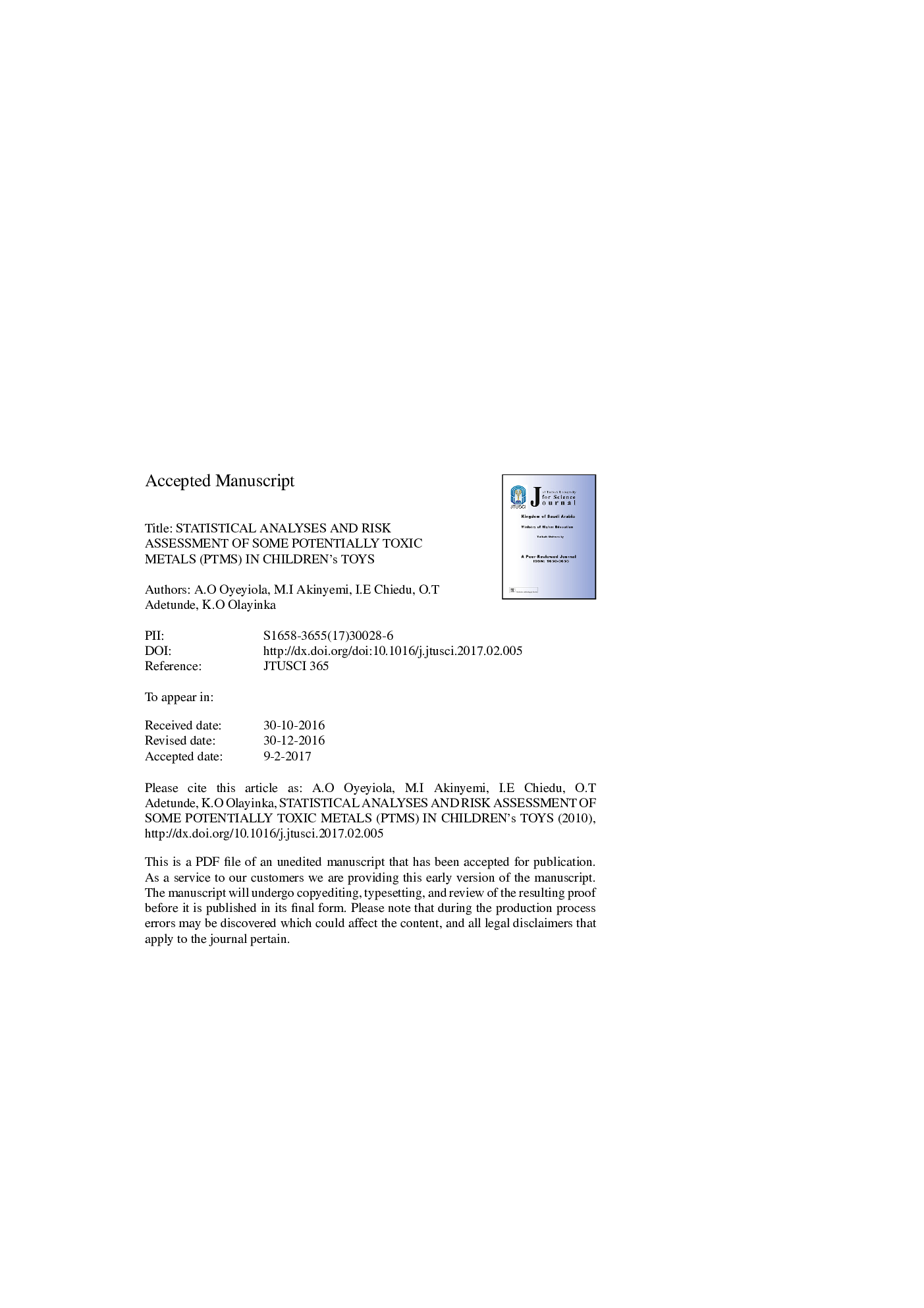| Article ID | Journal | Published Year | Pages | File Type |
|---|---|---|---|---|
| 7698422 | Journal of Taibah University for Science | 2017 | 25 Pages |
Abstract
Chemical exposure of children, especially from toys, is an engineering concern. The concentration and availability of potentially toxic metals (PTM) in children's toys were determined to assess the risk that these metals pose to children. Samples of 25 toys imported from China to Nigeria were purchased. Ternary acid digestion, followed by Atomic Absorption Spectrophotometry, was used to determine the concentration of PTM in the sample. Simulations of the saline and stomach acid extraction conditions were performed to determine the concentrations of PTM that could leach out from the toys during children's mouthing behaviours (available PTM), including chewing, sucking and swallowing. The total concentrations of PTM in the toys ranged from 3.55-40.7, 3.21-38.2, 9.78-159, 3.55-11.2, and 36.1-106Â mg/kg for Cd, Cr, Cu, and Pb, respectively. Availability studies showed concentrations ranging from 2.60-5.60Â mg/kg for Pb, 0.53-2.03Â mg/kg for Cd and 0.15-2.88Â mg/kg for Ni after saline extraction, and the concentrations after stomach acid extractions ranged from 3.33-7.10Â mg/kg, 1.15-3.15Â mg/kg and 1.33-1.81Â mg/kg for Pb, Cd and Ni, respectively. Statistical analysis showed a positive correlation between the total concentration of PTM and toys made from PVC materials. The risk assessment study showed that Cd posed the highest risk, with a hazard index (HI) as high as 4.50 for saline extraction. The study revealed that more precaution is needed during the manufacture of children's toys.
Related Topics
Physical Sciences and Engineering
Chemistry
Chemistry (General)
Authors
Aderonke O. Oyeyiola, Mary I. Akinyemi, Ifechukwude E. Chiedu, Oluwatoyin T. Fatunsin, Kehinde O. Olayinka,
